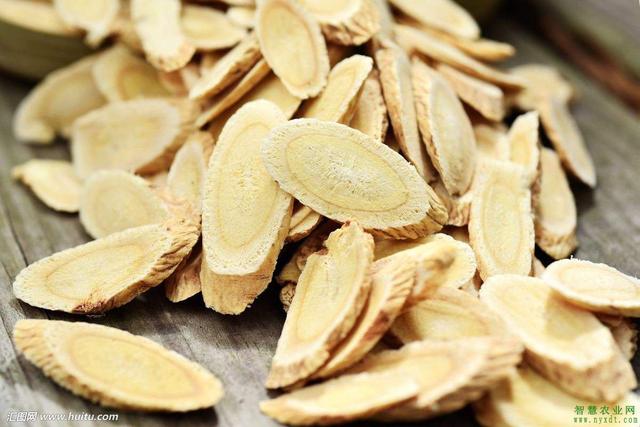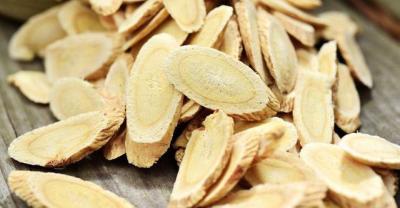What kind of medicine is the most profitable to grow in mountainous areas? Which Chinese herbal medicines are suitable for planting in mountainous areas?
1. Astragalus adsurgens
It is suitable for growing in dry and rainless areas, and its main roots are long, regardless of barren mountains, wasteland, Gobi, sandy banks, grasslands and poor ridges, while sites with good water sources and fertile land are not safe. The advantage lies in its rapid development, and it can be planted as long as it is not frozen in three seasons a year. In the dry season, the seeds sprouted and developed in a few days, with tenacious stress resistance. the planting lasted for 5 years, and the average yield of medicinal materials per mu was 120 kg per mu in these 5 years. The whole grass of Astragalus complanatus is rich in crude egg white and vitamins. If it is grazed as forage, it can make cattle and sheep fat and strong, and will not be sick, which will also promote the development of animal husbandry. If planting mu in the plain with 1.5 kg, if spread in the mountain area can use 2 kg, if do forage available 3 kg, should be tailored to achieve high yield and high efficiency.
2. Big-leaf dandelion
Big leaf dandelion has strong anti-adversity function, which has a certain influence on the treatment of acute mastitis, lymphadenitis, acute conjunctivitis, cold and fever, gastritis, hepatitis and so on. It is an indispensable and frequent use of traditional Chinese medicine. Big-leaf dandelion is not only a traditional Chinese medicine, but also a delicious vegetable when it is fresh and tender. If you plant in a protected area, you can cut 6-7 crops a year, produce 7200-8000 kg of fresh vegetables per mu, and continue for 3 years. This is a good project. If the market is carried out, it can actively supply characteristic vegetables and make people taste well. And in eating food, heat-clearing and detoxification, and good health.
3. Gualou
Gualou can develop all over the world, including hillsides, hills, grasslands, slopes, front and back houses and free land. In recent years, the price of Gualuo is high and scarce from time to time, and the price of Gualuoren also rises from time to time. The reason is that Gualuoren is used as medicine from time to time, and there are very few people who eat it. Now, the amount of Gualuoren as a health product has greatly increased. In addition, the northern provinces after processing to make melon seeds to eat. After the fruit yellowed at the end of autumn, the yield per mu was 150,200kg. In the market, the total Gualuo is 14 yuan 15 yuan / kg, Gualouren 28 yuan 30 yuan / kg, Gualou skin is 12 yuan 13 yuan / kg, the economic benefit is very good.

4. Radix Astragali
Radix Astragali prefers sandy or semi-sandy soil, followed by clay. The seedlings need more water when they grow up and less when they grow up, so they are semi-dry crops. It belongs to light-loving animals and develops poorly in dark and wet conditions. In the world Chinese medicine market for the frequent use of a large number of species, and a small number of exports to South Korea, Japan and Southeast Asia. Astragalus membranaceus is not only a traditional Chinese medicine to cure diseases and save lives, but also one of the emerging health products. In the southwest and Inner Mongolia region development 2 years harvest, other regions 1 year or 2 years, the yield per mu is 300 million 400 kg, the market price is 813 yuan / kg according to the different specifications. If greening barren mountain mu with 2 kilograms of seeds, can be temporarily carried out.
5. Cassia seed
Cassia seed does not occupy good land, drought and waterlogging resistance, strong compliance, no diseases and insect pests, in places with less people and more land is a good project, with seeds of 3kg / mu and low investment. The yield is 250 to 300 kilograms per mu. It fluctuates at 40.5 yuan / kg in the medicine market, which is unsalable in the market.
6. Millet
Barley rice can be planted all over the world, like the premise of dampness, warmth and sunrise, and ordinary soil can develop. It is often used in the market of traditional Chinese medicine all over the world, and it also occupies a place in the food market. It is not only used both in medicine and food, but also made into health products to be put on local markets. The result is very ambitious. When planted in spring, the seed per mu is 5 kg, the mid-early maturing species is better, and the yield of late-maturing varieties is not high, so it has not been used. Planting method is the same as planting peanuts, if planted in a large area, you can sow seeds with machines, just like planting corn in the field. Easy to plant, easy to get out, easy to deal with, almost no diseases and insect pests. When the seeds are matured at the end of autumn, the sun-dried seeds are waste, with a yield of 350-400 kg per mu and 6-7 yuan / kg after processing.
7. Dry Pinellia ternata
Pinellia ternata was planted in October-December and February-May and sowed in the past. Try to show that the yield per mu of Pinellia ternata is 150,200kg, and the benefit per mu is more than 6000 yuan. If the soil is fertile and handled properly, the yield per mu can reach more than 250kg, and the benefit is even more considerable. Dry Pinellia ternata field can be interplanted with corn, sorghum and other sorghum crops, can also be interplanted under the fruit forest, plane planting, the benefit is better. The price of its seedlings fell high, and the amount of seeds used per mu of Pinellia ternata was relatively large, about 35-50 kg, and the planting cost was so high that drug farmers could not reach it. Generally, they did not dare to carry out large-scale development, but planted on a small scale, and then expanded after I cultivated the seedlings.
8. Anemarrhena asphodeloides
Anemarrhena anemarrhena can develop regardless of barren mountains, barren slopes, wilderness, grasslands, sandy banks, forests, hills and sloping lands, adapting to a variety of conditions and full of vitality, so it is a good kind of mountain closure for greening and innovation of soil erosion. The root system of Anemarrhena anemarrhena is prosperous, the ability of fixing sand and soil is very strong, and it is resistant to drought, flood and cold. The household anemarrhena was harvested once in 2 ~ 3 years, the yield per mu was 400-700 kg, the price was 10-15 yuan / kg, and showed an upward trend. Anemarrhena anemarrhena is sown in spring, summer and autumn, mainly in spring, with 3 kilograms per mu of seeds and 4 kilograms in mountain areas or forests.
- Prev

Other people's peaches sell for 5 yuan per jin, but why can his peaches sell for 20 yuan per jin?
Speaking of peaches, everyone is no stranger, but what is the beauty of growing golden peaches? Guo Tao followed in his father's footsteps to plant peach trees, but his.
- Next

Will dental implants affect "MRI"? Planting experts solve your doubts.
Dental implants as the first choice for dental restoration, in addition to the price is the most concerned, there are many friends come to consult implant-related issues.
Related
- Fuxing push coffee new agricultural production and marketing class: lack of small-scale processing plants
- Jujube rice field leisure farm deep ploughing Yilan for five years to create a space for organic food and play
- Nongyu Farm-A trial of organic papaya for brave women with advanced technology
- Four points for attention in the prevention and control of diseases and insect pests of edible fungi
- How to add nutrient solution to Edible Fungi
- Is there any good way to control edible fungus mites?
- Open Inoculation Technology of Edible Fungi
- Is there any clever way to use fertilizer for edible fungus in winter?
- What agents are used to kill the pathogens of edible fungi in the mushroom shed?
- Rapid drying of Edible Fungi

